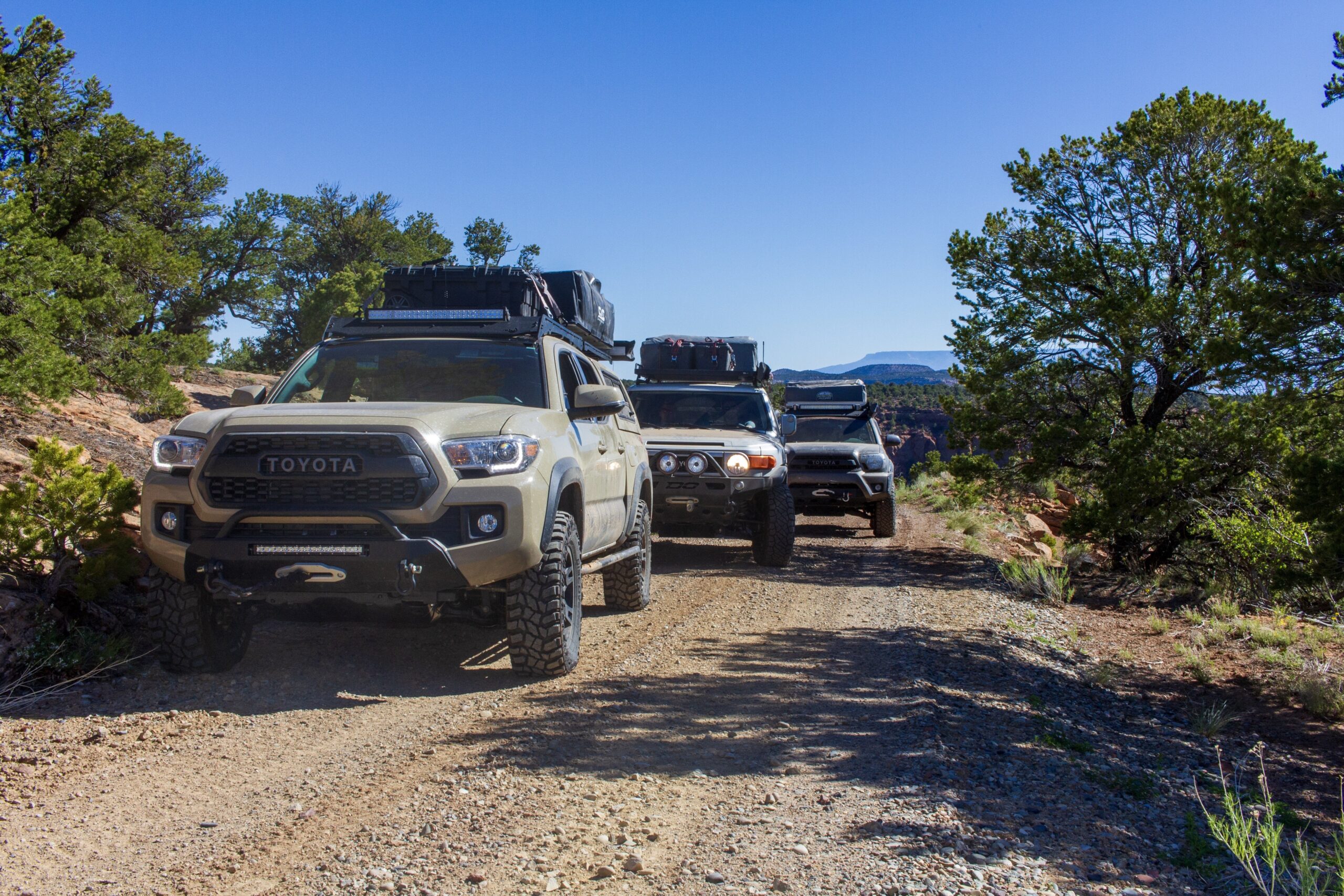
The most effective way to avoid an injury is to take preventative measures to mitigate those risks. One area, often overlooked, is the use of gloves. When traveling, I may have several types of gloves dependent on where my travels take me and the task I may need to perform.
During this article we will look at several types of injuries and what gloves should be considered to assist in avoiding those injuries.
The hazards associated with hand injuries while off-roading, overlanding, or touring are pinch points, entanglement, abrasion, sharp objects, and thermal exposure. Additionally, performing first aid has the potential for blood or bodily fluid exposure. One commonly not considered is food prep when in the back-country.
Pinch points, entanglements, abrasions, and sharp objects can be protected by a couple different types of gloves. First, what are these hazards? Pinch points could be the rear swing arm bumper when closing, working the Hi-lift Jack, or attempting to load heavy objects into the bed of a truck. Entanglements could simply be working inside the engine compartment with moving engine components. Abrasions and sharp objects are easily found in any work activity. Examples would be running a winch line, working a shovel, or using a knife.
While many like to work with mechanic type gloves from synthetics I prefer I leather glove. The glove should be of proper fit and conform to the hand. Leather gloves are great for protecting against abrasions, heat, and bumping against objects. Although they are not rated for lacerations from sharp objects, I find them to work well with tasks performed in the outdoors and fit many needs. Whether working a recovery or minor repairs, leather or a mechanic style glove are great options.
Thermal exposures can vary. If it is cold and you are needing to retain heat or an object is hot and you are needing to resist the heat to prevent thermal injury, gloves provide an excellent barrier for protecting our hands. If you have been in the cold for any amount of time you have noticed your hands and feet begin to get cold more quickly. The reason this happens is your body is sending less blood to the extremities to protect your vital organs. Understanding the physiology of the body should encourage you to protect the extremities from the hazard of thermal exposure. A good pair of winter weather gloves are great to keep with you if you will be traveling in winter months, at altitude, or in environments with weather extremes from day to night. When I was a sniper for 10 years, I found mittens were great when paired with an inner glove. The mittens opened at the top of the palm and allowed my fingers to slide out for tasks that required dexterity. The purpose of wearing a “lining” glove was so not to directly expose my fingers to the colder temperatures. Another thermal exposure is heat. The hood of a vehicle in direct sunlight in the summer months I am certain becomes the same temp as the surface of the sun. I’m joking of course, but you get the point. If you should need to handle vehicle components, cooking pots from a stove, or working around a campfire a leather glove is a great option. Extreme temperatures demand a type specific designed glove. Leather will not protect against extreme heat, but it does a great job when paired with a tool. An example would be retrieving a dutch oven from a fire. A leather glove and a hook work well together.
Blood and bodily fluids can have serious ramifications when dealing with injured or ill persons. Should you need to administer care to someone in your group or someone you encounter, nitrile gloves are an essential part of any well stocked first aid kit. Most first aid kits come ill-equipped with one or two pairs. Nitrile gloves are cheap. I keep a small box at the rear of my vehicle and pairs throughout my vehicle in various kits. Gloves keep patients’ wounds from becoming infected from your unclean hands. Gloves also keep you from contracting any potential diseases. An additional note about nitrile gloves avoid the option to purchase them in black. Purple or blue are my preferred colors as they contrast well with blood. If you do a proper assessment on an unconscious person you can more easily and quickly find locations where there is blood when you sweep the body accordingly. You may be asking why am I not suggesting the use of latex. Due to a percentage of the population having a latex allergy it is recommended to not use latex anymore.
The last area to consider is food prep. Recently I have begun to wear nitrile gloves while cooking on the trail. The reason being is sanitation. Cleaning my hands is still done prior to cooking. But to keep water usage down I will use my gloves to prepare most of the food and once done I will then prep my meat. Once it is all cooking, I will remove the gloves and use my utensils. Doing so I have less concern to expose my group to unsanitary washing methods.
So before you head out on your next adventure, ask yourself if you have what you need to succeed. Maybe throw in an extra pair of gloves for good measure.
Plan, Prep, Explore

+1 816.533.3859
info@switchbacksafety.com